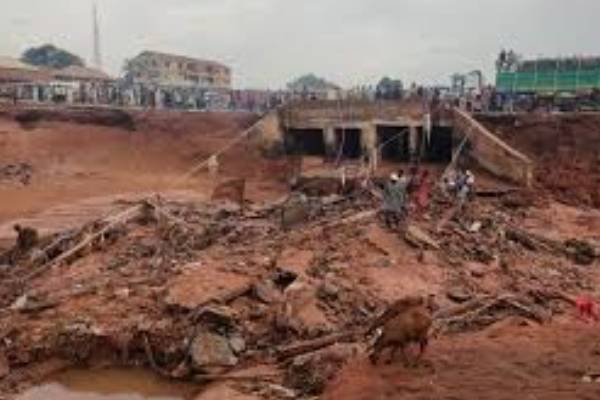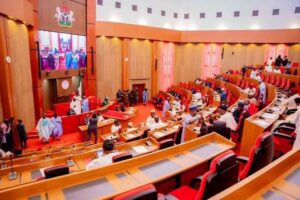The Federal Government has attributed the recent devastating flooding in Mokwa, Niger State, to human activities, torrential rainfall, and the effects of climate change—not the overflow of any dam, as previously speculated.
Minister of Water Resources and Sanitation, Prof Joseph Utsev, made this known at a press briefing in Abuja, dismissing claims that water released from Kainji and Jebba dams caused the flood.
He stressed that both dams remain intact and are not responsible for the incident.
Flooding on 29 May wreaked havoc in Mokwa, leaving over 200 people dead, many still missing, and more than 3,000 displaced.
Property worth millions of naira was also destroyed.
In the aftermath of the disaster, rumours circulated that dam releases triggered the flooding. However, the government insists the catastrophe was driven by intense rainfall, unregulated construction, and the absence of proper water diversion infrastructure.
The Minister revealed that the 2025 Annual Flood Outlook, issued by the Nigeria Hydrological Services Agency, had already forecasted the possibility of severe flooding in 19 local government areas in Niger State, including Mokwa.
The outlook identified 1,249 communities in 176 Local Government Areas across 33 states and the FCT as high-risk flood zones. An additional 2,187 communities in 293 LGAs fall within moderate-risk areas.
States listed under the High Flood Risk category include Abia, Adamawa, Akwa Ibom, Anambra, Bauchi, Bayelsa, Benue, Borno, Cross River, Delta, Ebonyi, Edo, the FCT, Gombe, Imo, Jigawa, Kebbi, Kogi, Kwara, Lagos, Nasarawa, Niger, Ogun, Ondo, Osun, Oyo, Rivers, Sokoto, Taraba, Yobe, and Zamfara.
Prof Utsev urged state and local governments to take the earlier warnings seriously by improving drainage systems and relocating residents from flood-prone areas.
He noted that the absence of alternative channels to redirect floodwaters had significantly worsened the impact on affected communities.





